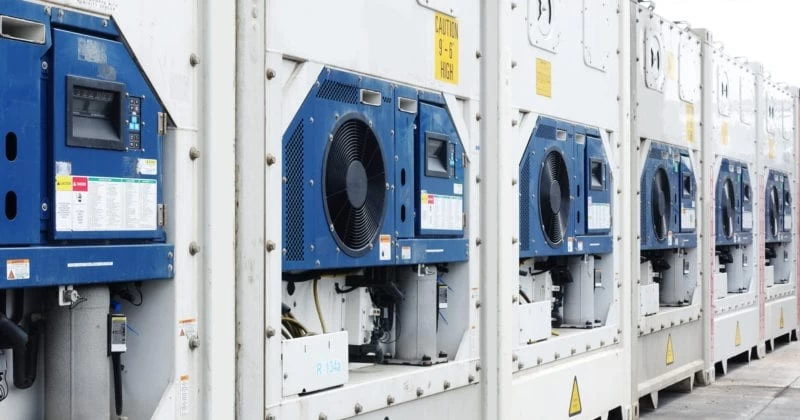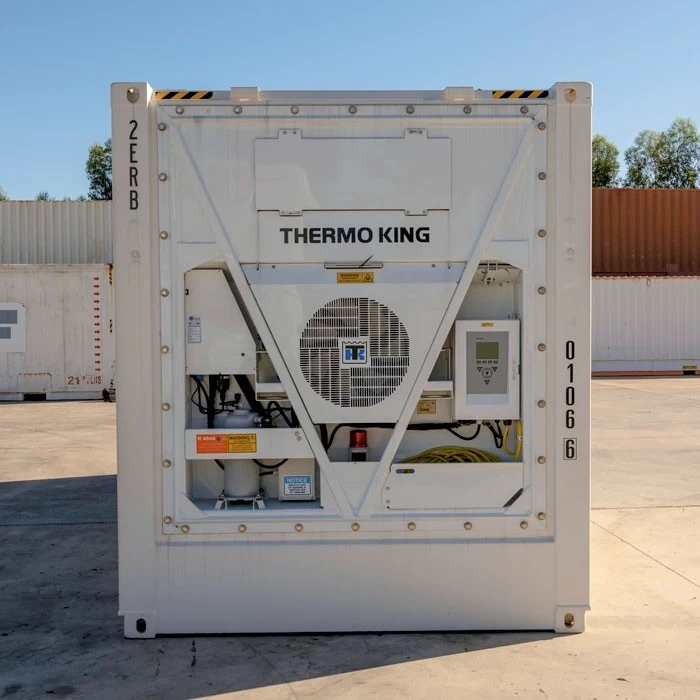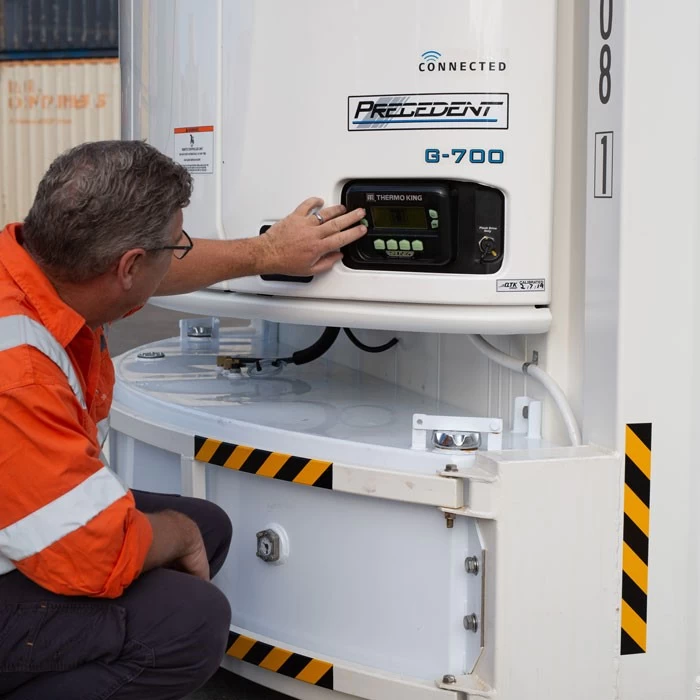Tel:18576695636
Facebook:https://www.facebook.com/profile.php?id=61551131221180
Contact Person:Anne
PDF Show:PDF
Refrigerated containers, also known as reefer containers, are utilized for transporting goods that require temperature control. These containers are equipped with a refrigeration unit that is connected to the power supply on board the ship.
A reefer container is a type of shipping container that maintains a regulated cool temperature through a mix of insulation and powered cooling, to carry temperature-sensitive products. Essentially serving as a large refrigerator, reefer containers typically sustain a temperature range of -25°C and +30°C. From transporting fresh produce to playing a vital role in disaster management, there are many uses for a cold storage container.
This guide will cover everything from how refrigerated containers work to what can be stored in them. On top of that, it will address how much reefer containers cost and the different sizes available at SWWLS.

If you’ve ever wondered, “how do refrigerated shipping containers work?”, you should know that there are several factors to consider.
Refrigerated containers are designed to maintain a cool temperature using a refrigeration unit, which distributes chilled air through the container's floor. Most of these containers are equipped with T-shaped decking, allowing the circulation of cool air around the cargo. It's crucial to understand that a refrigerated shipping container cannot actively lower the temperature of goods. Instead, it ensures the maintenance of the ideal temperature for the products. Consequently, pre-cooling the cargo before loading it into the container is essential.
 |
 |
| The motor on a SWWLS 20ft Cool Room reefer container. |
A staff member operates a reefer container motor. |
Ventilation is a crucial component of maintaining a reefer’s temperature and keeping goods fresh. For that reason, boxes used to store cargo on the container should have ventilation. Furthermore, there should be no gaping spaces between products and the reefer’s walls.
In addition to the refrigerated unit, which sits at the front of the container, reefers are equipped with insulation between the internal and external walls. The quality of insulation, and the thickness between the walls determines the efficiency of cooling inside. SWWLS’s proprietary design uses a self extinguishing foam for increased safety that is also proven to perform for extended periods of time in Australia’s harsh summers. More advanced insulation also means reduced run time for the refrigeration unit, which reduces the ongoing cost of machine operation.
Meanwhile, some reefer containers include a cooling system that uses water to help maintain the desired temperature. These reefers also feature a drainage system that works to prevent water accumulation.
There are two types of reefer motor - electric and diesel.
Electric Reefers |
Diesel Reefers |
|
Electric units are most commonly used for static storage, at warehouses, events or other locations where there is access to power. In some instances electric units will be used to transport goods, but between destinations the cooling motor is not active, so the unit relies on insulation to maintain internal temperature. |
Diesel reefers are commonly used for transport, especially in Australia due to the distance regularly traveled between major cities, either by truck or train. They’re fuelled by a diesel powered generator set (genset) that provides electricity to the unit. When delayed, the motors can be refilled at trainyards, truck stops or logistics hubs with ease. |
Essentially, anything that you’d find in the supermarket's fresh fruit and vegetable or frozen section can be stored in a reefer container.
When it comes to storing goods, a reefer container is incredibly versatile. It can safely store a wide range of items found in supermarket sections, from fresh fruit and vegetables to frozen foods. Whether it's perishable food, dairy products, seafood, meat, wine, medicines, or fresh-cut flowers, a reefer can handle it all. With the ability to fit two pallets side by side and double stack pallets with Vertical Load Bars, it's a practical and efficient storage solution for a variety of goods.
If you ask anyone, “what is a reefer container used for?”, most people would associate it with transporting perishable food. As it stands, this is by far the most popular use for a reefer. Reefers play an integral role in the worldwide trade of food, including but not limited to vegetables and fruit, meat and dairy products, and seafood. It increases the availability of out of season food, which is in strong demand across the developed world. Many of these products can be transported around the globe by sea using the reefer. Reefer containers are also regularly used to transport products locally, from dairy items like milk and cheese, to fruit like bananas which are primarily grown in Queensland but are a staple of the Australian diet (for most).
 |
|
 |
|
Meats, Poultry and Fish Anything from prepackaged or cryovaced meats, to frozen seafood or poultry. |
DairyDairy includes staples of Australian diets, including pre packaged milk, cheese, creams and butter. |
Fruits and VegetablesFresh from the farm and straight into market, boutique fruit and vegetable traders or supermarkets. |
 |
 |
Transporting MedicinesAnother common use for a refrigerated shipping container is the transportation of medicines. Before the introduction of reefers, pharmaceuticals were primarily sent by air, limiting the number of medications that could be transported. Nowadays, reefers can transport large quantities of medicine at a lower cost, which can make some medications more affordable. It can also make them more accessible to individuals around the world. |
Transporting FlowersFlowers can remain fresh no matter where in the world they come from using a reefer container. Although the majority of flowers travel by air, advances in reefer ventilation technology have led to an increase in transportation via sea. On top of that, new reefers are being developed with an ozone concentration level high enough to prevent mould, bacteria or fungi from ruining flowers. |
One of the most interesting uses for a reefer is the transportation and preservation of film set props. Given that production equipment and props can cost millions of dollars, they must be protected from the elements while being moved from place to place. Reefers are especially useful when shooting in extreme weather conditions and harsh environments.
Reefer containers can play a pivotal role in helping a community overcome a natural disaster like a flood or bushfire. If supermarkets or pharmacies have been destroyed in a fire, reefers provide a safe, temperature-controlled environment to store goods and prevent food wastage. On top of that, reefers can serve as temporary shelters with insulation that reduces significant fluctuations in temperature, although they would need to be disconnected from a power source so that they are at average room temperature.
SWWLS’s range of refrigerated shipping containers vary from compact 20ft containers right up to 48ft long, ensuring you’ll find the right model for your storage needs. It’s essential to consider your dimension requirements prior to hiring or purchasing a reefer so that it’s guaranteed to fit your space or hold the amount of goods required. Check out our Shipping Container Dimensions and Sizes guide for a complete list of all of our containers’ dimensions.
Our 20ft Cool Room container is an economical solution for both short and long-term storage. These containers are perfect for those who want to store a smaller amount of products and reduce electricity use and cost.

The 41ft Refrigerated Container provides temperature control for up to 40 pallets, making it a versatile option for transporting a variety of goods.

Complete with smart temperature control systems, our 46ft Refrigerated Container is ideal for long-distance transport via either road or rail. Transport up to 44 pallets.

The largest reefer in our range, the 48ft Refrigerated Container is the right solution if you need to transport large quantities of goods that require cool temperatures. Transport up to 48 pallets.

The cost to hire or buy a reefer container is dependent on a number of factors. The size of the container, its specifications and key features all help determine our prices. It’s safe to say that our prices reflect the high quality and longevity of our reefers.
Hiring a reefer will also require you to pay for the minimum hire period of 31 days and all transport charges. From there, monthly invoices will be sent for rental periods longer than one month.
Unlike more traditional containers, such as 20ft and 40ft dry containers, Reefers are less common, and consequently difficult to provide cost estimates.
For a more detailed cost assessment, check out our quick and easy Get a Quote form online today.
If you’re in the market for a refrigerated container, you can consider SWWLS your one-stop shop. We have shipping container depots in locations all across the country, guaranteeing you’ll find your ideal reefer no matter where you’re based. Contact our dedicated team today if you have any questions about which reefer size is right for your situation. If you’d prefer to chat with one of our friendly team members over the phone, request a callback at a time that’s convenient for you.
Tel:18576695636
Facebook:https://www.facebook.com/profile.php?id=61551131221180
Contact Person:Anne
PDF Show:PDF
Highly customized tea processing machine to meet your special needs, strictly product quality control is our requirement .